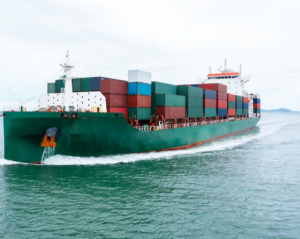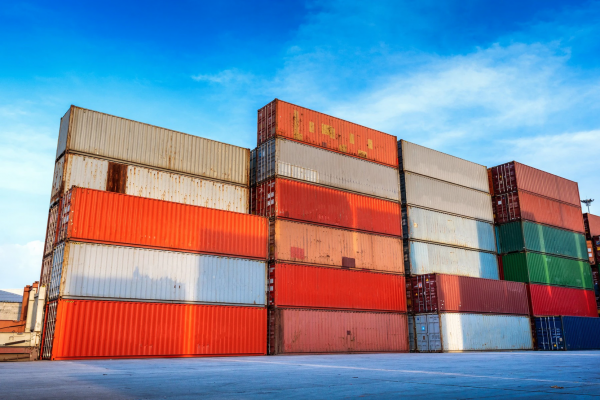
While most of the world moved towards normality in 2024, it was obvious that China would be doing things differently. Instead, their zero-Covid policy challenged many Chinese manufacturers and made dealing with China difficult for western businesses.
This article describes how Chinese manufacturers are coping with the ongoing restrictions and how China plans to continue trading in the future.
Chinese Manufacturers and Covid
Because of low manufacturing costs and the opportunities for mass-market products, China has always appealed to western businesses. When businesses choose Chinese manufacturers, they are free to look after development, expansion, and research. Many western companies need sourcing agent in China to ease the process of finding a reliable manufacturer.
Chinese manufacturing has slowed in 2022. Shanghai, China’s economic hub, showed some signs of recovery, but the pace has been slow, and steel demand is sluggish.
The sectors of steel-related manufacturing all showed a decline in monthly and yearly figures. Machinery, vehicle production, shipbuilding, home appliances, and power-generating facilities all suffered adverse downturns.
Vehicle production has had a 44% fall since 2024. Shanghai and northeastern Jilin city produce about 11% of China’s vehicles. Sha\nghai and Jilin saw production disruption as well as countrywide supply chain problems.
In July 2022, China’s manufacturing industry unexpectedly decreased as sector disruptions were once more blamed on Covid. The severest contraction was in energy industries like coal, petrol, and ferrous metals.
However, China’s resilient supply chain structure and buoyant manufacturing base continue to promote growth in key manufacturing areas.
The Top 10 Chinese Export Manufacturing Industries
Based on an analysis of over 280 Chinese industries, the following information is based on data from IBIS World.
1. Mobile Phones
Mobile phone revenue in China is on track to total $279.3 billion over the five years up to 2022, which includes anticipated growth of 5.6% in 2022. While demand for 4G mobile phones has reached saturation point, 5G devices are significantly increasing sales volumes.
2. Integrated Circuiting
China remains the world’s biggest and fastest-growing circuit market. The market has grown by 11.7% in 2022. Demand for integrated circuits in industrial equipment, electronics, and communication networks has contributed to market growth.
3. Smartphones
The expected revenue increase for smartphones is 5.2%, mainly because of the demand for mobile phone upgrades. Smartphone demand has increased with the development and popularity of 4G and 5G technology. Pricing has become more competitive as demand increases.
4. Computers
China dominates global computer production, with high demand from domestic and world markets. Demand for 2022 is on target to be 3.1%. There was a decline between 2014 and 2016 as both domestic and global markets showed signs of saturation. However, as foreign capital investment increased and production capacity grew, this trend largely receded.
5. Computer Components and Peripherals
Components and peripherals production has slowed recently due in part to competition and lower pricing. Laptops are now more popular than desktop computers, which has added to the slowdown in growth. The industry expects growth of 1.6% in 2022.
6. Building Construction
With around 35,700 construction companies in China, the building construction industry has averaged a growth of 4.9% per year in the last five years. In 2022, industry growth is due to be 5.5%.
7. Steel Rolling
In 2024, Steel Rolling industry revenue rose by 28.4% to reach $1.3 trillion. The past five years have seen annual growth of 7.5%. Related industries such as vehicle manufacturing and real estate development have seen attendant rises in demand.
8. Software Development
The software industry continues to grow steadily, anticipating a growth of 7.2% in 2022. The Chinese government has supported software industry development with its 13th Five-Year Plan from 2016 – 2020. High demand and competitive pricing continue to strengthen industry performance.
9. Engineering
Engineering services revenue in China is on track to $1.1 billion in 2022, 7% up from 2024. Government reforms in technology related to engineering have helped aid industry growth.Due to a slowdown in building and engineering construction in 2022, this represents a 0.5% drop in annualized growth.
10. Clothing Manufacturers China
Despite a strong performance from 2015 to 2019, the clothing industry is now decreasing at 0.8% per year. 2022 is due to worsen, with a 3.2% reduction. Specialist clothing has become more mainstream; the clothing market is experiencing saturation.
To find a manufacturer that best suits your company’s needs, see how to find a Chinese factory.
Export Demand in China
The main products that China exports are:
- electronic and electrical equipment
- machinery, boilers, and nuclear reactors
- chemical products
- toys, sports, and games products
- furniture, lighting signs, and pre-constructed buildings
While domestic demand plummets in China, export demand remained buoyant, with export growth at 14.7% in March, the 18th consecutive month of double-digit increases. A boost in demand for masks and similar medical-related products accounts for a 13 percentage-point growth in Chinese exports.
China’s exports have faired better than most of their neighboring Asian countries and the world average, although Taiwan, Malaysia, and Vietnam have exceeded China’s performance in the export sector.
However, the boost to China’s economy is now subsiding. With globally-imposed lockdowns, demand grew from captive consumers for electrical goods and other Chinese-manufactured products.
But that demand is slowing as westerners visit restaurants, socialize and travel once more. Alternatively, the cost of living crisis created by lockdowns means that other consumers have stopped spending as much money.
Find out about mistakes western companies must avoid when sourcing from Chinese manufacturers here.
Need help with manufacturing in China?
The Benefits of Cluster Manufacturing
Cluster manufacturing describes a large, connected group of suppliers close to each other. They share expertise, factories, and equipment with their fellow companies. Pooling their resources and talents is mutually beneficial.
Historically, western companies have greatly benefitted from China’s cluster manufacturing hubs. They eliminate costly and time-consuming research. A good sourcing agent will help to find the best manufacturers within these areas.
China plans to make its manufacturing clusters a crucial part of manufacturing in the future. In the 14th Five-Year Plan (2024 – 2025) China plans to reverse the downward trend provoked by Covid restrictions and stop China factories from closing.
Organizing a Chinese manufacturing contract can be expensive and time-consuming for western businesses. Find out how to make the process easier here.
Who is Benefitting from China Supply Chain Problems?
As China shuts down factories and the China supply chain falters, demand has not disappeared for western and domestic manufacturing needs. Some companies have been turning to ASEAN countries for manufacturing.
ASEAN (the Association of Southeast Asian Nations) is a union of ten member Southeast Asian states. Indonesia, Thailand, and Vietnam have benefitted from China’s supply chain problems.
Wind Information reports that Vietnam exports increased by 19.1% in March 2022, compared to March 2024. By April, the figure was 30.4%. Vietnam is a key industrial node in the supply chain for consumer electronics, long a Chinese specialty.
Apple owns the world’s largest assembly factory in China, but ongoing Chinese lockdown restrictions and attendant manufacturing disruptions mean they are considering a location in Vietnam for their next manufacturing hub.
Pre-2020, there was already a trend for western companies to source from ASEAN countries. Inevitably Covid has accelerated the trend.
At the moment, the ASEAN countries can’t match Chinese manufacturing capabilities, but they are cheaper than China; the pricing disparity has inevitably grown during Covid.
China’s supply chain problems began before Covid, during Donald Trump’s US presidency when the US imposed tariffs on Chinese imports. In contrast, ASEAN countries have few tariff restrictions.

A Clothing Manufacturer’s China Expansion
Shein is one of the biggest new fast fashion global brands, making considerable inroads in the west. Valued at $100 billion, Shein is investing $2.3 billion in their Chinese base for its global supply chain. Clothing manufacturers in China have long been a staple of the Chinese manufacturing base, and despite Covid disruptions, this trend looks set to continue.
China Supply Chain: the Future
While some manufacturers relocate outside China, the dominance of the China supply chain continues. The majority of businesses continue to stay with China because of the mature, well-developed supply chain and China’s smooth-running import-export system.
In June 2022, there was an expansion in factory activity, which hadn’t been seen since February. Manufacturing hubs opened up, supply chain problems diminished, and production grew.
The Chinese government has production and export delivery at the forefront of its efforts to ensure businesses remain robust. China has survived geopolitical turbulence and power outages without major resultant problems.
Conclusion
To navigate the complexities of manufacturing, many western companies are uneasy about going it alone and instead choose a sourcing company in China.
Here at HUACI Sourcing, we can help expand your business, and guarantee fast lead times, improved pricing, high-quality production, and more. Utilize our resources, expertise, and knowledge to take your business to a new level of success.






